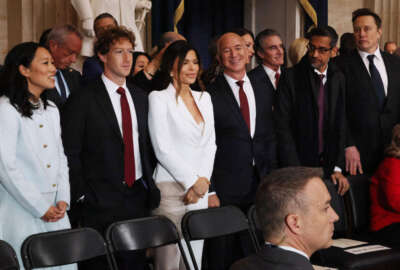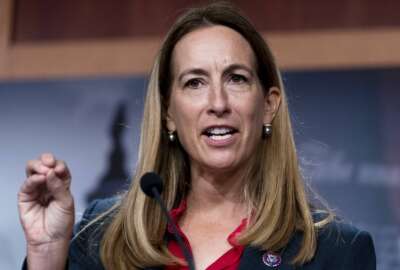Real procurement reform needs to come from within, experts say
Roger Waldron, president of the Coalition for Government Procurement, and Stan Soloway of the Professional Services Council discuss what hurdles stand in the way of...
In January 2007, the Acquisition Advisory Panel — usually referred to as the SARA Panel — issued its final report, offering a laundry list of suggestions on how to reform the federal acquisition process.
Roger Waldron, president of the Coalition for Government Procurement, was a member of the SARA Panel. He told In Depth with Francis Rose, as part of Federal News Radio’s special report, The Missing Pieces of Procurement Reform, that many of the issues the panel made recommendations on seven years ago are the same fundamental ones being talked about today.
“A lot of things are worse than then they were at that time in terms of the compliance environment, the focus on not government-unique requirements versus access to the commercial marketplace and reducing barriers to entry and intellectual property rights,” Waldron said. “You go right down the gamut, things are not where they should be if you want an efficient and effective procurement system overall that serves the American people. ”
With so many stakeholders involved, Waldron added, it’s difficult to achieve consensus on procurement reform.
“There’s a huge disconnect … between the oversight community and those who are in the business of meeting requirements, in meeting mission and how that plays out in the procurement system,” he said. “And that, frankly, is going to be a big hurdle.”
Stan Soloway, president and CEO of the Professional Services Council, agreed with Waldron’s assessment. He joining Waldron and Rose on Oct. 16, for an on- air panel as part of the special report.
Although Soloway was not on the SARA Panel, he did testify before a Senate hearing about the panel, which he criticized at the time for not looking at the “big picture” of procurement reform.
“[The hearing] was about the tactical sort of immediate things like, ‘Should we have protest authority on task orders?'” he said. “I think that gets to the heart of what my concern is, is that we continue to focus on tactical moves that are doable do’s in the near term and then wash our hands and say, ‘Oh, we just reformed the system’ and we haven’t done anything really systemic.”
Soloway said he thinks there are certain people within the Obama administration who “get it” when it comes to procurement reform. However, he admitted that with only 18 months left in the administration, they don’t have a lot of time to get much done in the big picture.
The first step, according to Soloway, is to step back and recognize there’s an entirely new generation of acquisition professionals coming into government.
“We’re looking at today and yesterday, we’re not looking at what acquisition in the future should be five years, 10 years, even 20 years down the road,” he said. “We have a program side of the House that says, ‘We really want the best commercial solutions,’ but … we create every barrier in the book to these commercial entities coming in.”
He added that a lot of those issues will take care of themselves if the acquisition workforce is given the tools and support it needs to do its job.
“You have to start with that,” Soloway said.
To begin making the necessary changes, Waldron said, you need to put acquisition people in a room and to have a real conversation about reform.
Waldron characterized many of the procurement conversations he’s aware of going on in the government as “check the box” conversations, where the government, for example, acknowledges that it’s listened to industry and goes down the path it’s already decided to go.
“I think it’s got to be a real conversation and that takes leadership,” he said.
The key folks in government when it comes to making procurement reform, as far as Waldron is concerned, are the middle managers.
“Leadership from those folks in this area and having that conversation,” he said. “They have the Strategic Sourcing Leadership Council. They ought to open that council up and just sit down with industry directly, face-to-face, and have conversations about if they want to reduce costs and increase value through the procurement system, it’s got to be that kind of leadership-to- leadership discussion.”
Soloway would go one step further, calling for an “acquisition spring,” in which the changes needed originate from within the acquisition workforce itself.
He pointed to efforts like the Acquisition of the Future initiative, which involves government acquisition personnel thinking through what the future may hold.
“At the end of the day, somehow it needs to come from within,” Soloway said. “Because those of us within industry we look like we’re just padding industry’s coffers. If you take a certain position on one side, you’re considered politically right or left or what have you. I think that there’s a talent base within the government that, with the right support and energy, could actually drive some stuff.”
More from the special report, Missing Pieces of Procurement Reform:
After decades of DoD acquisition reform, Congress has yet to tackle cultural issues
31 ideas for reforming DoD contracting
Communication, transparency key to successful procurements
Copyright © 2025 Federal News Network. All rights reserved. This website is not intended for users located within the European Economic Area.
Michael O’Connell is senior digital editor of Federal News Network optimizing content for the best user experience. Follow @moconnellWFED
Follow @moconnellWFED






